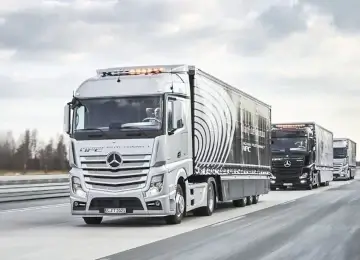Trucking in Europe: advantages and pitfalls
Are your suppliers or buyers located in Europe and therefore do you periodically need to transport cargo back and forth? Of course, the best option would be to find a reliable transport company that could be entrusted with this kind of turnkey transportation. However, you should know something about the peculiarities of cargo transportation in Europe: this will help to avoid misunderstandings both with the carrier (transport company) and with foreign partners.
One of the advantages of this direction can be considered the possibility of accurate transportation planning: the likelihood of unforeseen circumstances is small, since the roads in Europe are maintained in excellent condition, and road services work efficiently. Due to the presence of high-speed autobahns, it is possible to quickly move vehicles, almost throughout Europe. The absence of internal borders between most European countries, as well as simplified customs control where there are border crossings, also contributes to the optimization of transportation times.
However, this coin also has a downside: strict control over the technical condition of trucks, compliance with traffic rules requires drivers to comply with the driving regime (after several hours of continuous work, several hours of rest must necessarily follow). All traffic data is recorded by a tachograph – a device that should be equipped with all vehicles transporting goods across Europe. Therefore, forwarding dispatchers regulating cargo transportation from Europe and to Europe are required to accurately calculate time and distances: due to improper planning, a long downtime may occur (for example, the driver ended his working hours on Friday, he did not reach the loading point for only a couple of dozen kilometers and forced to stay until Monday).
How to optimize delivery – European countries: tips for customers.
How can you, as a client, help the carrier (forwarding company) fulfill your request more accurately? Clearly communicate the quantity and weight of the cargo, especially when it comes to group transportation of groupage cargo. Be sure to specify the working hours of the warehouse for loading and unloading: all European companies work strictly according to the internal regulations. In addition, many overseas warehouses have shortened working days. You should also remember about the holidays. An option that works well with partners from the CIS is to call and ask not to close the warehouse because “our car is already very close” to European consignors and consignees, alas, it will not work.
Another important point: find out in advance and prepare all the transport documents for the cargo necessary for transportation. Remember that the task of the transporter is to ensure the availability of transport documents for transportation, and everything related to the cargo is the responsibility of the client. Therefore, it is worthwhile to clarify ahead of time what certificates, medical or veterinary certificates are needed for the cargo. Downtime, which will occur if the car is delayed for some kind of check, will be very unprofitable for you.
Why is freight transportation in Europe more expensive than in other directions?
Many customers are surprised that the cost of transportation with European countries exceeds the cost of a similar service in the CIS, for example. Of course, I would like to calculate the freight based solely on the distance. But this is impossible. What factors influence the rise in price of European transportation?
Firstly, only modern cars that meet certain standards can drive around European countries. For example, today these are tractors of at least Euro 4 standard. The cost of such a fleet and the cost of its maintenance are considerable. And they, of course, evenly fall into the cost of transport services.
Secondly, most European highways are toll roads. Payment for roads is included in the cost of one kilometer of mileage in Europe.
Thirdly, the package of documents required for cargo transportation in Europe includes very expensive CEMT certificates or “permits” that allow travel across countries. Certain costs also require the issuance of visas. Fourthly, the cost of freight, and the transportation of cargo, reflects the cost of fuel. As you know, in Europe one is more expensive than in Moldova, and at least two-thirds of the way the car must be done on European fuel. However, not everything is so scary: a competent carrier has a lot of ways to optimize transport costs. First of all, by drawing up a profitable route and a clear timetable. Another advantage of transporting across Europe: the possibility of compiling groupage cargoes, when cargoes for 3-15 customers are delivered in one car. Such transportation, of course, requires a professional approach of dispatchers and drivers, but allows customers to pay for the transportation of only their part of the cargo in proportion to the total load. We hope that you, represented by our company, will find a reliable carrier, and the delivery of goods across Europe will seem to you a simple and inexpensive matter.





